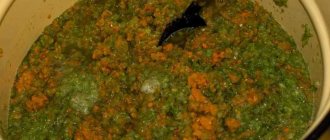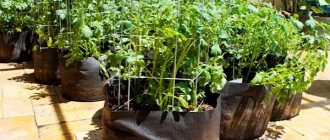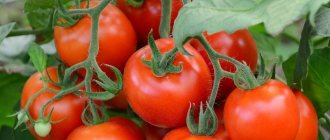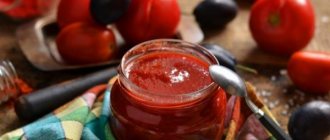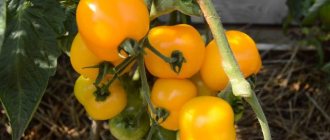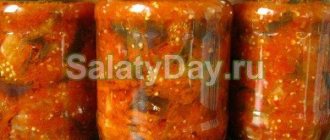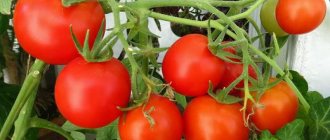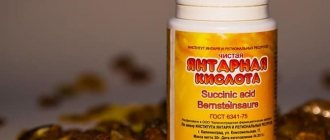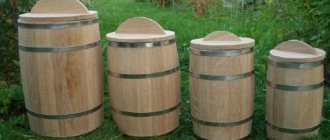Almost every summer resident grows tomatoes; they are one of the most popular garden crops. Many people successfully grow them on a windowsill or balcony. To get a full-fledged juicy harvest, you need to follow not only basic recommendations, but also know certain tricks that will help you grow tomatoes that are tasty and in sufficient quantities.
Tomatoes are especially vulnerable during the period of flowering and the formation of ovaries, which, due to a lack of certain substances and violation of growing conditions, can suddenly begin to fall off. It is at this time that boric acid, a white powdery substance without taste and odor, which must be properly diluted, will help the gardener to stimulate the ovary of tomatoes. The sachet is inexpensive, they sell the product in any store for summer residents.
The effect of boric acid on tomatoes
If tomatoes are grown in a greenhouse or indoors, such treatment is almost mandatory for them. In the absence of insects, pollination for the formation of ovaries is problematic. Some try to do this themselves using brushes or other devices, but the process is painstaking and time-consuming.
Operating principle for fruit set
It is much easier to resort to spraying the bushes with boric acid. This can be done both during the period of bud setting and during flowering. It's even better to do this twice during the specified periods.
Important! Boric acid will promote the formation of ovaries and abundant, active flowering.
The procedure is simple to perform and has a number of additional indications for use:
- prevents the ovaries from shedding;
- if there is excess moisture, a boron solution will prevent rotting of the fruit;
- the flow of sugar to the fruit increases.
Boron is an effective fertilizer for tomatoes, which improves the appearance of the crop, helps its growth and fruit ripening.
Signs of boron deficiency
The absence or deficiency of boron can lead to the following consequences:
- the inability of the culture to form ovaries, and therefore the appearance of fruits;
- decreased resistance of tomatoes to many diseases and resistance to pests.
This is what plants suffering from boron deficiency look like:
- the bushes actively bloom, but the ovary does not form on them (if the boron deficiency is small);
- the tops of the plants become light and begin to curl downwards;
- the main growth point dies;
- young leaves begin to curl, large ones darken and break;
- there is abundant growth of stepchildren;
- if fruits do form, they show dark brown spots with signs of tissue death.
To correct the situation, immediately treat the bushes with a solution of boric acid.
Signs of excess boron
An excess of this substance also has a negative effect on tomatoes:
- the leaves begin to take on a characteristic gloss;
- brown spots appear on them;
- the spots quickly increase, the leaf dies;
- the middle of the leaves arches characteristically, forming a dome.
If during processing the dose of boric acid in the solution is greatly exaggerated, the leaves will fall off, as will the ovaries.
What to feed when there is a shortage
The modern chemical industry offers a fairly large number of preparations containing boron. Each of these substances has its own nuances when used as fertilizers.
These fertilizers are available in liquid and granular form. But experts recommend using liquid fertilizers containing boron to fertilize vegetable crops , since due to its tiny amount in preparations, the liquid form is more quickly able to “deliver” this element to the roots and vegetative mass of vegetables.
How to prepare the solution
It is important to know the specifics of preparing the solution so that spraying does not lead to negative consequences.
Correct proportions and instructions
First, prepare the base. Dilute 1 tsp in a glass of hot water. powder without top. After making sure that the powder has completely dissolved, the base is diluted in 10 liters of warm water. The solution is ready for spraying when even small particles are not present in it. It should not be prepared for future use, as sediment may form over time.
Depending on the goals of the procedure, the proportions may be different. To prevent the ovaries from shedding, 1 g of boric acid is dissolved in 1 liter of hot water. After the solution has cooled, carefully spray it with a spray bottle.
To combat late blight, add 1 tsp to a bucket of warm water. powder _ For better results, a week before such treatment, it is recommended to spray the bushes with a weak solution of potassium permanganate.
After boron, you can treat the tomatoes with an iodine solution: a few drops per bucket of water are enough.
Let's sum it up
Most tomato growers advise fertilizing tomatoes with a complex of ash, iodine and boron. As a result, the absorption of nutrients in plants, the formation and number of ovaries on the bushes increases, and the likelihood of late blight in tomatoes is reduced.
It has been practically proven that such fertilizing increases the yield of tomatoes by 20-30%. Try boron-iodine-ash fertilizer and get a rich harvest of tasty and juicy fruits!
SUPER FEEDING TOMATO DURING FLOWERING TO INCREASE YIELD
How to properly process tomatoes
Tomatoes are sprayed according to the following rules:
- the procedure is carried out in the morning or evening; direct sunlight can burn the wet leaves of the bush;
- It is recommended to use a spray bottle with small nozzles, the tomatoes should seem to be enveloped in a mist of small drops, large drops are destructive for the plant;
- spray all parts of the plant: flowers, ovaries, plant stem and leaves;
- the leaves are sprayed so that the solution gets on the back side; for this, the bush is slightly tilted during the procedure;
- the temperature of the solution and soil should be approximately the same;
- it is important to strictly observe the proportions, otherwise there is a risk of plant death or growth cessation;
- It is recommended to first carry out a test spraying on one plant; if there are no negative consequences, treat all remaining bushes.
Processing scheme
It is recommended to spray tomatoes with boric acid three times per season. The first treatment is carried out at the end of June: this procedure will serve as a prevention of late blight. It is important to treat the plants no earlier than 2 weeks after planting the seedlings in open ground. Spray the second time at the beginning of budding. The third and final spraying is done during active flowering.
When to fertilize
It is possible to apply boron to cultivated plants, even if there are no obvious signs of deficiency of this element. Experts recommend applying solutions and preparations containing this element at the following stages of vegetable crop development:
- when soaking seed material;
- when growing seedlings - 12-14 days after emergence;
- after transplanting seedlings to a permanent place (when the plants acclimatize in the beds);
- during the period of budding and flowering;
- during intensive formation of ovaries;
- when the fruits begin to ripen.
Important! The boron content in the soil may decrease if too much fertilizer containing nitrogen and lime have been added to the soil.
Processing nuances
When growing in greenhouse conditions, treating bushes with boric acid is more important than when cultivating in open ground. In enclosed spaces, pollination occurs slower and worse, so boron is vital for bushes.
Other nuances are also taken into account:
- if the greenhouse is not ventilated, you will need a less concentrated solution, it will remain on the plant longer;
- Please note that when applying the solution under the root, it will take longer for the plant to absorb it;
- There are Dutch feeding technologies in which treatments are carried out regularly every 9-10 days;
- it is important that the water temperature does not differ from that maintained in the greenhouse.
In open ground:
- spray strong, viable bushes that have already completely taken root in the open ground;
- It is not recommended to process after or during precipitation or before a hot, dry day;
- Fruit formation in different varieties occurs at different times, it is advisable to fertilize at different times;
- foliar feeding in open ground is much more effective than root feeding;
- even with a large number of ovaries, they must be fed, otherwise they may suddenly fall off.
Fertilizer Application Methods
Fertilizers containing boron can be applied in two ways: by applying “at the root” or by fertilizing “by the leaf”.
Root method
When applying boron-containing fertilizers “at the root”, you can use both liquid and granular fertilizers.
Granular preparations are usually applied to the beds in the spring before planting vegetables. Such fertilizer will decompose more slowly, so mineral elements will flow to the roots of vegetables in portions.
Liquid fertilizers applied to the soil will be more quickly absorbed by tomato roots, so the nutrients will reach their destination faster.
Foliar method
Sometimes urgent application of boron-containing fertilizers to plants is required.
In this case, foliar feeding or spraying is carried out. The dosage of such spraying is two times less than when applied to the soil.
In this case, the nutrients immediately enter the leaf cells and disperse with the juice throughout the plant. You can treat the plants using a garden sprayer.
Read about the signs of deficiency of other microelements in tomatoes: phosphorus, nitrogen, calcium, sulfur and iron in the materials at the links.
Typically, foliar and root feeding alternate with each other.
Tips and recommendations from experienced summer residents
Experienced summer residents recommend:
- do not spray the seedlings - for immature bushes it is difficult to maintain the proportions of the solution, they are easy to destroy;
- To feed seedlings, use complex microfertilizers, boron is also present in them;
- Do not spray plants with a hot solution; let it cool before use;
- in windy weather the procedure is not recommended;
- some successfully add a few drops of iodine and a little milk to a solution of boric acid - this combination will protect tomatoes from pests and diseases.
Signs of excess boron
Compliance with the proportions of boric acid when feeding tomatoes with a solution is mandatory. An excess of microelement inhibits the growth of bushes and fruit formation. The first signs of excess boron are leaf necrosis and dome-like appearance. The plants gradually turn yellow and dry out. In this case, urgent measures are necessary to remove excess boron from the area.
Precautionary measures
Despite the fact that boric acid is harmless to humans in small quantities, it is still a toxic substance. Therefore, to work with boric acid you need to protect yourself:
- Spraying should be carried out in closed clothing;
- use a mask and gloves;
- boron is very flammable, so it should not be stored near an open fire;
- Do not allow particles of the substance to get into your eyes or lungs;
- after use, remove any remaining solution;
- The longer the powder is stored, the more toxic it is; it is better to use fresh.
Reviews
Gardeners who sprayed tomatoes with boric acid agree that the most important thing in this procedure is compliance with the proportions and processing technology.
Sergey, Rostov: “On the advice of friends, I started spraying tomatoes with boric acid during budding and at first I made a mistake: I made too much of the solution, and the treatment had the opposite effect: there were almost no ovaries. In the second season, on the contrary, I prepared too weak a solution; it simply did not give any effect, although there was a harvest. But in the end, he achieved his goal - he carried out the processing strictly according to the rules, three times. And the result exceeded all expectations - I have never had such a tomato harvest before.”
Irina, Belgorod: “I grow tomatoes on a loggia; we don’t have a dacha. I learned to reap the benefits. Only very small and few. I read about boric acid. I took a risk and don’t regret it. The bushes began to bloom much more abundantly, there were more ovaries, and the bush itself was much more viable. The harvest is literally pleasing to the eye.”
Timofey, Moscow: “I have been using boric acid for a long time and not only for tomatoes. Potatoes respond well to such spraying. I carry out the treatment only twice - during flowering and the appearance of ovaries. I saw how my neighbor’s tomatoes began to dry out after too intensive processing. Everything needs moderation. And the acid powder varies in quality; some are overdried and are less effective. However, before each season I try to buy new bags. It’s not expensive at all, and boric acid itself can be purchased without any problems.”
Peculiarities
Feeding tomatoes with boric acid is especially important when grown in poor soils.
Boron is a necessary element for the proper development of tomatoes . But, before using it as a fertilizer, you should familiarize yourself with the effect it has directly on the tomato crop.
Effect of Boron on tomatoes:
- influences the formation of the number of ovaries, can accelerate the process of fruit formation;
- The chemical elements of the plant enter into a chemical reaction with Boron, which causes the production of more sugar in the fruit. The reaction occurs naturally, which does not raise any doubts about its safety for health. The tomatoes become very sweet and tasty;
- under the influence of Boron, nitrogen fertilizers are better absorbed . Almost immediately after treatment, the plant changes and takes on an attractive, healthy appearance;
- strengthens the immune system . The plant practically no longer fights pests on its own;
- the bush grows better and faster;
- if there is excess moisture in the greenhouse, it stops the rotting process.
It is recommended to apply boron fertilizing several times during the gardening season.
